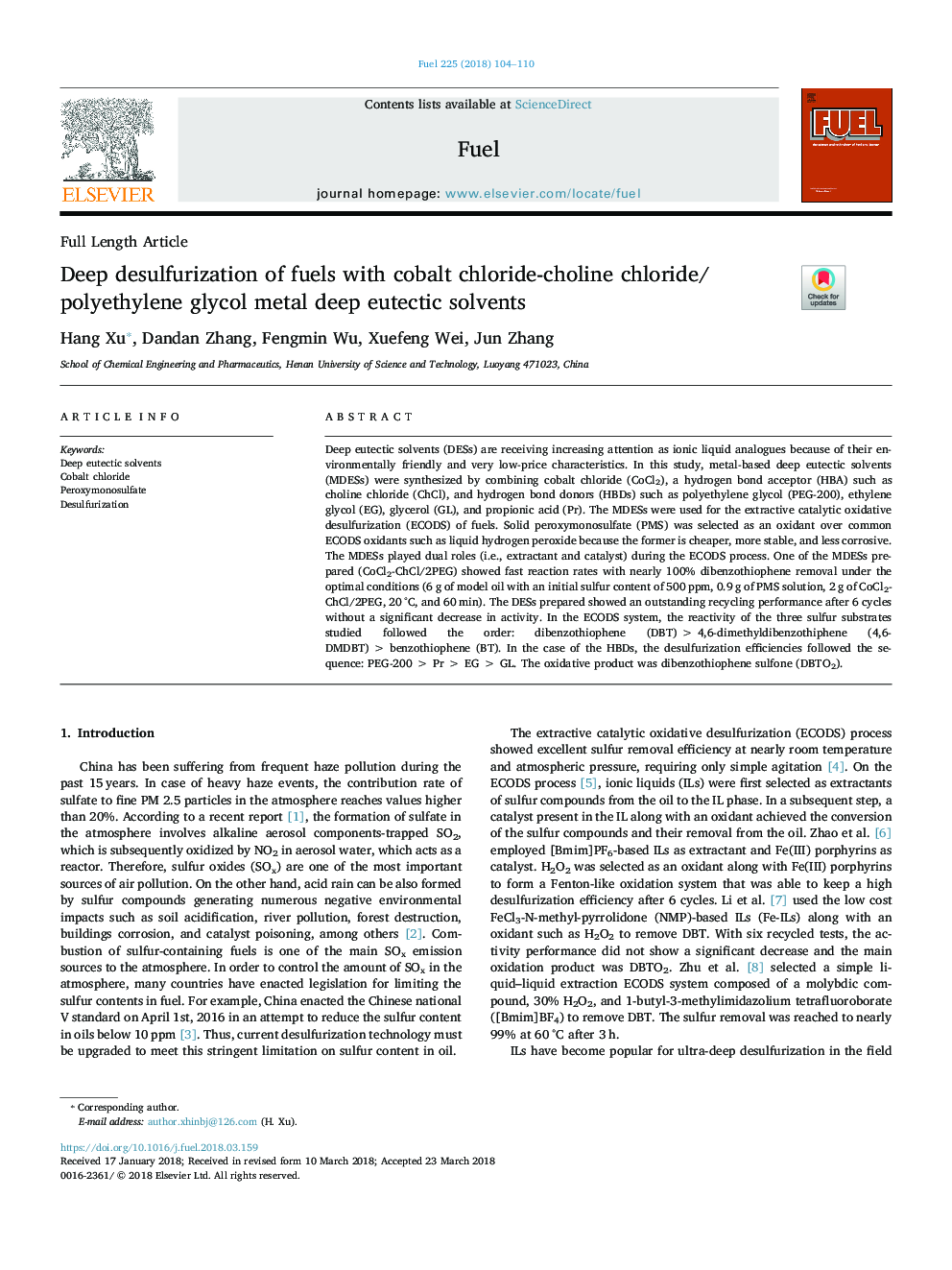| Article ID | Journal | Published Year | Pages | File Type |
|---|---|---|---|---|
| 6630981 | Fuel | 2018 | 7 Pages |
Abstract
Deep eutectic solvents (DESs) are receiving increasing attention as ionic liquid analogues because of their environmentally friendly and very low-price characteristics. In this study, metal-based deep eutectic solvents (MDESs) were synthesized by combining cobalt chloride (CoCl2), a hydrogen bond acceptor (HBA) such as choline chloride (ChCl), and hydrogen bond donors (HBDs) such as polyethylene glycol (PEG-200), ethylene glycol (EG), glycerol (GL), and propionic acid (Pr). The MDESs were used for the extractive catalytic oxidative desulfurization (ECODS) of fuels. Solid peroxymonosulfate (PMS) was selected as an oxidant over common ECODS oxidants such as liquid hydrogen peroxide because the former is cheaper, more stable, and less corrosive. The MDESs played dual roles (i.e., extractant and catalyst) during the ECODS process. One of the MDESs prepared (CoCl2-ChCl/2PEG) showed fast reaction rates with nearly 100% dibenzothiophene removal under the optimal conditions (6â¯g of model oil with an initial sulfur content of 500â¯ppm, 0.9â¯g of PMS solution, 2â¯g of CoCl2-ChCl/2PEG, 20â¯Â°C, and 60â¯min). The DESs prepared showed an outstanding recycling performance after 6 cycles without a significant decrease in activity. In the ECODS system, the reactivity of the three sulfur substrates studied followed the order: dibenzothiophene (DBT)â¯>â¯4,6-dimethyldibenzothiphene (4,6-DMDBT)â¯>â¯benzothiophene (BT). In the case of the HBDs, the desulfurization efficiencies followed the sequence: PEG-200â¯>â¯Prâ¯>â¯EGâ¯>â¯GL. The oxidative product was dibenzothiophene sulfone (DBTO2).
Related Topics
Physical Sciences and Engineering
Chemical Engineering
Chemical Engineering (General)
Authors
Hang Xu, Dandan Zhang, Fengmin Wu, Xuefeng Wei, Jun Zhang,
